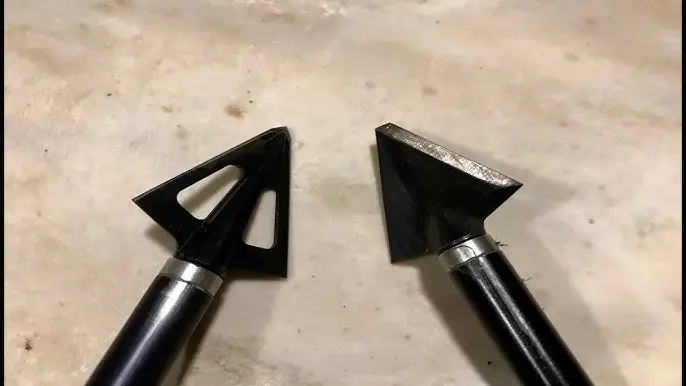To learn more about single bevel vs double bevel wideheads, read this article. Whether you’re a beginner or a seasoned hunter, you’ll learn the basics about both broadhead types. If you’re considering switching over to one of these broadheads, here are a few things to consider before you make your decision. One major difference between single bevel and double bevel broadheads is the amount of torque that they’re capable of generating. Single-bevel blunt-nosed broadheads are generally heavier, so they’re great for use on deer.
Grizzly’s single-bevel vs double-bevel broadheads
There are several differences between Grizzly’s single bevel and double bevel broadheads. Grizzly’s single bevel broadheads are made of two layers of 1075 steel and are spot welded and copper brazed for strength. Each is precision ground with a 25 degree single bevel, and they are designed for deep penetration. The single bevel allows the broadhead to twist on impact with bone, which creates an “S” shaped wound channel. This feature also results in bigger blood trails and quicker game recovery.
Grizzly’s single bevel broadheads have a sharpened edge on one side of the blade. The other side is flat. Single bevel broadheads are generally considered right-beveled, but some manufacturers also make left-beveled models. Single bevel broadheads can also have right or left-helical fletchings.
Single bevel broadheads have a solid reputation, and have been used commercially for 30 years. They are capable of taking down a variety of large game around the world. A properly set-up arrow will allow you to maximize the effectiveness of these broadheads. As a rule, single bevel heads are more accurate and more powerful than double bevel broadheads.
Grizzly’s double-bevel broadheads
Grizzly’s double-beveled broadheads apply lateral and rotational forces as they travel through the target. During its three-eighth-inch journey through the target, the broadhead twists 70 degrees to cause significant lateral pressure. At the same time, a rotating knife blade reduces the resistance of the target, increasing the force of penetration. The resulting split fractures the target.
The design of the Grizzly screw-in broadheads are made of two layers of 1075 steel, each spot welded and copper brazed. The blades are heat-treated to 52 Rockwell, and are precision-ground with a single, 25-degree bevel. Both styles of Grizzly broadheads are sized to kill a wide range of game, including deer.
Double-bevel broadheads are not new to the bowhunting world, but they’re not as common as single-bevel broadheads. They first hit production over thirty years ago and have helped kill countless big game animals. They’re also the “Gold Standard” of double-bevel broadheads. Grizzly’s double-bevel broadheads are made of high-quality materials and are extremely durable.
Grizzly’s Bruin Broadhead is a good choice for hunters who need a versatile broadhead. Its double-bevel design is remarkably tough and easy to sharpen. This broadhead is available in 125 grains, 150 grains, and 175 grains. Aside from grizzly’s double-bevel broadheads, you can also purchase the Bruin Broadhead from Rocky Mountain Specialty Gear for an affordable price.
Grizzly’s 125 grain single-bevel vs double-bevel broadheads
Single-bevel and double-bevel broadheads both have their benefits and drawbacks. Grizzly’s 125 grain single-bevel broadheads are made of two layers of 1075 steel, brazed and spot welded to achieve 52 Rockwell hardness. These specialized broadheads feature a 25 degree single-bevel grind, which produces an angled, twisting action on the bone when it strikes it.
Single-bevel broadheads have a more narrow girth, allowing for more rotation. These broadheads should work together with an angled fletching helical to create a destructive wound channel. Many single-bevel shooters describe a devastating “L-cut” through internal organs. While the single-bevel may turn inside the animal and spin around the bone, it isn’t guaranteed.
Single-bevel broadheads are a relatively new innovation in the world of bowhunting. They were first introduced over 30 years ago by Grizzly bowhead inventor, Harry Elburg. Their use has resulted in the killing of countless big game animals. Single-bevel broadheads are typically used in conjunction with heavy arrows to improve penetration and perception of deer kill problems.
Choosing between a single-bevel or a double-bevel broadhead depends on the weight and tuning of your bow. The right-wing helical fletching has a lower weight, while left-wing helical fletching is more accurate. Single-bevel broadheads are generally more accurate and more effective, but they require more tuning time than their double-bevel counterparts.


